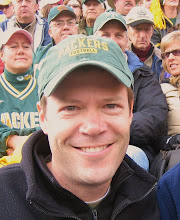Kids always ask the most honest and logical questions, but often there isn’t a logical response. Why is it that the second-largest metropolitan area in the US with a population of nearly 15 million has had no NFL team since the Raiders left in 1994. Furthermore, how is it that a small town in Northeastern Wisconsin can possibly support an NFL team when a media market the size of Los Angeles can’t? Any rational economic analysis cannot explain why the Packers work. The numbers just don’t seem to add up. Yet the Packers have a fan following and financial base that is the envy of professional sports teams around the world. Consider the following – the entire population of the city of Green Bay is just 101,025, and yet:
- Lambeau Field holds 73,128 people, 72% of the population of the entire city.
- There are 112,158 shareholders, more than the entire population of the city.
- The Packers have sold out 291 consecutive home games, dating back to 1960.
- There are 83,881 people on the waiting list for season tickets, 126 people from the waiting list were awarded season tickets this year.
- At the current rate (averaging about 160/year), fans going on the waiting list today would need to wait 524 years for tickets.
How is this possible? To answer this question, TriggPack commissioned a market research study to understand the true size of the Green Bay market. For the purpose of comparison, the study benchmarked Green Bay against the Los Angeles market, where, coincidentally, Curly Lambeau at one point intended to move the team. They might have been the Los Angeles Packers, a name that makes almost as much sense as the Minnesota-born Los Angeles Lakers.
(Note: these calculations were done in the Bob Hope Airport while being subjected to a string of such torturous 80's hits as Culture Club's "Karma Chameleon" and “Obsession” by Animotion, so I can't take responsibility for their accuracy. It felt like some sort of cruel experiment to see how long I could last before bludgeoning an airport employee with my carry-on bag. Little known fact, if you are in an airport, dentist's office or elevator, you have a 78% chance of being subjected to “True” by Spandau Ballet.)
Here's the actual size of the Green Bay market:
And here's the size of the Los Angeles market:
So, as you can see, the addressable market for the Packers is actually about 32X bigger in terms of adjusted population. Not only that, but to understand the full market size, spending per person needs to be taken into account. With the holidays approaching, Packer fans are stocking up on their gear – everything from Packer Crocs to Rubik’s cubes (we have both items, by the way). If your house is anything like ours, you’ve got so much Packers gear under the tree it looks like an air drop into East Berlin. Here’s the breakdown of the average annual spending of Packer fans:
- 4 home game tickets: $400
- 1 away game ticket: $100
- 1 Packer jersey (e.g. the third jersey!): $80
- Updated cheesehead: $19
- Miscellaneous Packer-branded gear: $200
- Access to Packers Insider: $25
- Brats: $150
- Total: $974
Multiply that average annual spending by the number of fans and you’re talking about a $ 16.3 billion business opportunity! That makes Green Bay the largest NFL market, dwarfing LA. No wonder Al Davis moved the Raiders out of town. But they still can’t sell out in Oakland. If he had any sense, he’d move the Raiders to Ashwaubenon.




No comments:
Post a Comment